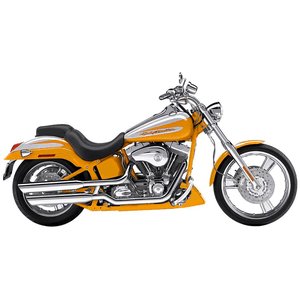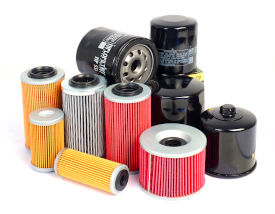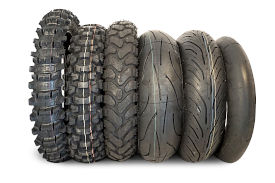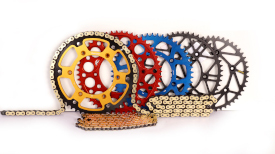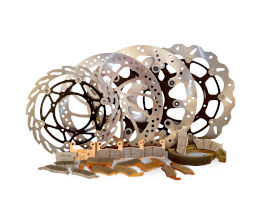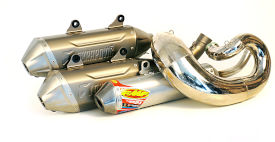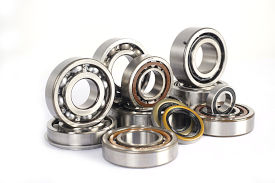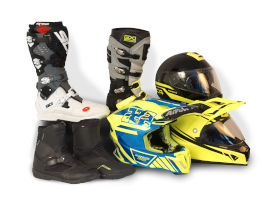Harley-Davidson Softail Deuce (2000-2007): A Timeless Cruiser with Attitude
When Harley-Davidson introduced the Softail Deuce in 2000, it wasn’t just another cruiser—it was a statement. Combining retro styling cues with modern engineering, the Deuce carved out its niche as a motorcycle that looks like it rolled straight out of a 1950s garage but rides with the reliability of a 21st-century machine. After throwing a leg over this iconic machine, one thing becomes clear: the Deuce isn’t about chasing specs or breaking records. It’s about the visceral experience of motorcycling, where every rumble from its V-twin engine feels like a conversation with the road.
Design: Turning Heads Since Day One
The Softail Deuce’s design is a masterclass in balancing nostalgia with innovation. The stretched 18.5-liter (4.9 US gal) fuel tank—a hallmark of the model—flows seamlessly into a chromed console, while the fastback rear fender gives it a muscular, chopped profile. Harley offered a kaleidoscope of color options over the years, from understated Vivid Black to eye-catching two-tone combinations like Rich Sunglo Blue/Chopper Blue and Fire Red Pearl/Vivid Black.
The Deuce’s custom DNA shines through details like the shotgun-style exhaust (chrome, of course), a horseshoe oil tank, and wire-spoke wheels. The low-rise flat-track handlebar keeps the riding posture relaxed, and the 25.9-inch (659 mm) seat height ensures even shorter riders can plant their feet firmly. But don’t let the laid-back stance fool you—this bike has presence. Parked next to modern cruisers, the Deuce still looks like the rebellious cousin who showed up to a family reunion in leather and sunglasses.
Performance: The Heartbeat of Milwaukee
At the core of the Softail Deuce is Harley’s air-cooled V-twin engine, which evolved during its production run. Early models (2000–2006) packed a 1,449 cc (88.4 cu in) Twin Cam 88B engine, delivering 63 HP at 5,300 RPM and 106 Nm (78.2 lb-ft) of torque. By 2007, displacement grew to 1,573 cc (96 cu in) in some variants, boosting torque to 121.8 Nm (89.8 lb-ft). These numbers won’t terrify sportbike riders, but they’re missing the point. The Deuce’s power delivery is all about low-end grunt—the kind that pulls you forward like a freight train from stoplights.
The 5-speed transmission (6-speed in 2007) pairs with a belt final drive, offering smooth shifts and minimal maintenance. Throttle response varies between carbureted and fuel-injected models (post-2002), with the latter feeling slightly crisper. On the highway, the Deuce settles into a comfortable cruise at 110–120 km/h (68–75 mph), though the air-cooled engine can get toasty in summer traffic. The claimed 175 km/h (108.7 mph) top speed is academic—this bike thrives in the 60–90 mph zone where its exhaust note transitions from a burble to a roar.
Handling: Heavy, But Predictable
Weighing 305 kg (672 lbs) dry, the Softail Deuce isn’t a flickable machine. The 66.6-inch (1,691 mm) wheelbase and 32-degree rake prioritize stability over agility, making it a natural on straight roads. However, Harley’s hidden rear suspension (103 mm travel) and 41 mm telescopic forks (142 mm travel) handle bumps better than many expect from a hardtail-looking chassis.
Where the Deuce surprises is in low-speed maneuvers. The 160/70-B17 rear tire provides ample grip, and the belt drive eliminates chain snatch, allowing precise throttle control in parking lots. Still, U-turns require planning—this is a bike that rewards deliberate riding, not knee-dragging antics.
Competition: Standing Out in a Crowded Field
In the 2000s cruiser market, the Softail Deuce faced stiff rivals:
- Honda Shadow Spirit 1100:
- Lighter at 256 kg (564 lbs) and cheaper, but lacks the Deuce’s custom flair.
-
Honda’s V-twin is smoother but doesn’t deliver the same low-end character.
-
Yamaha V-Star 1100 Classic:
- Superior fuel economy (4.3 L/100 km vs. Deuce’s 5.0 L/100 km), but styling feels generic.
-
Belt drive and air cooling mirror the Harley, but the engine lacks “personality.”
-
Indian Scout (2015+ models):
- A later competitor, but worth noting for buyers considering used vs. new.
- More power and modern tech, but can’t match the Deuce’s old-school charm.
The Deuce’s edge lies in its authenticity. While Japanese cruisers often imitate Harley-Davidson, the Deuce is Harley-Davidson—flaws and all. Its V-twin vibrations, chrome-heavy aesthetic, and aftermarket support make it a canvas for riders who want to personalize their machine.
Maintenance: Keeping the Deuce Rolling
Owning a Softail Deuce isn’t just about riding—it’s about stewardship. Here’s what to watch:
- Belt Drive: Inspect every 8,000 km (5,000 miles) for cracks. Replace with MOTOPARTS.store’s Gates PowerGrip HTD belts for durability.
- Oil Changes: Use SAE 20W-50 (3.0L with filter). Our Mobil 1 V-Twin Synthetic kit extends intervals to 5,000 km (3,100 miles).
- Brakes: Upgrade single discs with MOTOPARTS.store’s EBC HH sintered pads and BrakeTech rotors for improved stopping.
- Carburetor Tuning: Pre-2002 models benefit from a CV Performance Jet Kit to optimize air/fuel mix.
Common quirks include primary chain tensioner wear (listen for rattling) and voltage regulator failures (check charging output annually). Keep the DOT 5 silicone brake fluid fresh to prevent spongy levers.
The Verdict: More Than a Motorcycle
The Softail Deuce isn’t perfect. It’s heavy, tech-free by modern standards, and drinks fuel like a ’70s muscle car. But perfection isn’t the point. This is a bike that feels alive—a machine that connects rider to road through vibrations, sound, and sheer presence.
For those who value character over convenience, the Deuce remains a compelling choice. And when it’s time to tweak, restore, or personalize, MOTOPARTS.store has the expertise and parts to keep your Deuce running—and roaring—for decades to come.
Specifikacijų lentelė
| Variklis | |
|---|---|
| Taktas: | Keturtaktis |
| Maksimali galia: | 47 kW | 63.0 hp |
| Maksimalus sukimo momentas: | 122 Nm |
| Kuro sistema: | Carburetor (2000–2003) or Electronic Sequential Port Fuel Injection (ESPFI) (2004–2007) |
| Maksimali galia @: | 5400 rpm |
| Darbinis tūris: | 1573 ccm |
| Didžiausias sukimo momentas @: | 2750 rpm |
| Cilindro skersmuo × eiga: | 95.3 x 111.3 mm (3.8 x 4.4 in) |
| Konfigūracija: | V |
| Aušinimo sistema: | Air |
| Suspaudimo santykis: | 9.2:1 |
| Cilindrų skaičius: | 2 |
| Matmenys | |
|---|---|
| Ratų bazė: | 1692 mm (66.6 in) |
| Sausas svoris: | 305 |
| Svoris su skysčiais: | 309 |
| Sėdynės aukštis: | 660–719 mm (26.0–28.3 in) |
| Bendras ilgis: | 2423 mm (95.4 in) |
| Prošvaisa: | 122–142 mm (4.8–5.6 in) |
| Degalų bako talpa: | 18.5–20.0 L (4.9–5.3 US gal) |
| Perdavimas | |
|---|---|
| Galinė pavara: | belt |
| Transmisija: | 5-speed (2000–2006), 6-speed (2007) |
| Techninė priežiūra | |
|---|---|
| Variklio alyva: | SAE 20W-50 |
| Stabdžių skystis: | DOT 5 Silicone |
| Uždegimo žvakės: | NGK DCPR7E or NGK DCPR7EIX |
| Uždegimo žvakės tarpas: | 0.8 |
| Transmisijos alyva: | SAE 80W-90 |
| Šakių alyvos talpa: | 0.686 |
| Variklio alyvos talpa: | 3.3 |
| Pirminė alyvos talpa: | 0.77 |
| Pavarų dėžės alyvos talpa: | 0.7 |
| Variklio alyvos keitimo intervalas: | Every 5000 km or 2 years |
| Vožtuvų laisvumo tikrinimo intervalas: | Hydraulic lifters (no adjustment required) |
| Važiuoklė ir pakaba | |
|---|---|
| Takas: | 127 mm (5.0 in) |
| Galinė padanga: | 160/70-17 |
| Priekinė padanga: | mh90-21 |
| Galiniai stabdžiai: | Single disc, 4-piston caliper |
| Priekiniai stabdžiai: | Single disc, 4-piston caliper |
| Galinė pakaba: | Hidden horizontal-mounted coil-over shock |
| Priekinė pakaba: | 41 mm telescopic fork |
| Krypties posvyris (šakės kampas): | 32.0° |



